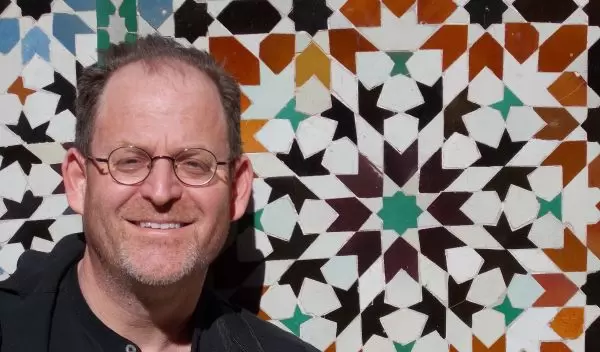
After the Lecture...
We sat down with New York University's Bart Kahr after his recent talk at the National Science Foundation as part of the NSF Distinguished Lectures in Mathematical and Physical Sciences. Soon, we were immersed in history, learning how herapathite is connected to Polaroid, and why 18th century physicist Étienne-Louis Malus is Kahr's hero.
I have always been interested in crystals--since I was a small kid. I would collect rocks to line them up.
Light and crystals are two of nature's wonders. But their reciprocity holds particular interest. Light has informed the structure of matter. And much of what we know about light has come about as a consequence of its interactions with crystals. This is a wonderful dialogue that never ceases to focus my attention.
We're not a laboratory that is trying to cure a cancer, not to say that that wouldn't be great.
My favorite crystalline sample was a 50th birthday present from my wife and son. It's three pyrite crystals--there is a big one, a medium-sized one and a small one--perfectly articulated, yet they are bound to one another. It's supposed to represent our family.
Herapathite would be a good Crystal of the Week, if you have one more week. In the middle of the 19th century, a physician in Bristol, William Bird Herapath, was interested in the toxicology of quinine because the British in tropical places were getting malaria. He fed a lot of quinine to a dog. The dog peed, and Herapath's assistant accidentally dropped iodine into the dog urine. Metallic-looking crystals precipitated. It turned out that these crystals were highly anisotropic in their absorption of light; they were almost perfect visible light polarizers. Edwin H. Land later invented Polaroid by grinding herapathite to sub-micron size particles that he aligned by extrusion in a polymer. But, it turns out that the structure of herapathite was not known until work with Werner Kaminsky from our lab in 2009. Despite the fact that this crystal was the basis for an entire industry, the structure remained a mystery and thus its interactions with light were not completely understood.
Crystallography, devolved from a particular science, mineralogy, is now part of many sciences. It is the basis of the study of matter, generally speaking.
One of my heroes is Étienne-Louis Malus. He discovered the polarization of light divorced from a calcite crystal. But there is another reason he is my hero. Malus was part of a corps of scholars Bonaparte took with him when he invaded Egypt. Malus kept a diary in Egypt, and it is clear that he was the conscience of Bonaparte's army. During the more recent invasion of Iraq, I was distraught. I couldn't believe what I was seeing on television. But you know, I‘m a chemistry professor. I worked out some of my distress by translating Malus' diary with a Ph.D. student, Kacey Claborn. Malus wrote passionately about the madness that is warfare. But he contracted the bubonic plague when he was in Egypt. He survived just long enough to get back to Paris to make his greatest discoveries about Iceland spar calcite crystals, and then he succumbed.
Whenever my family has the opportunity to go rock hunting, we try to take it. There were some great places in Eastern Washington that were accessible when we lived in Seattle, particularly silver mines whose tailings were filled with big quartz crystals that I visited with my son when he was a little boy. They would give you a metal spoon to dig through the soft tailings, and you would find these spectacular crystals. If you were 6 or 7 years old, you could think that you were a tremendous explorer.
We mostly make the things we study in the lab, but sometimes we investigate minerals. There was a particular mineral, apophyllite, that I was very interested in as a postdoc at Yale because of its unusual optical properties. I wanted to find this mineral in its natural environment. The samples that were in the Peabody Natural History Museum had come from the Erie train tunnel in Jersey City dug in 1908. So, Jersey City is one of the more unlikely places I have gone hunting for crystals. Not a popular place for crystal collectors as most everything is paved. My wife and I abandoned this hunt because they're still using the train tunnel. I decided not to go inside.
If I were not a crystallographer, I'd be a painter.


